Stepping into the Paintings of Artist Lim Nam-jin
By Kang “Jennis” Hyunsuk
As a person who is interested in paintings, I have often heard the name of this artist who has been doing her artistic work for decades here in Gwangju. I once met a painting of hers in a gallery; I remember standing in front of it for a long while, touched by her work. In that piece, two dark buildings stood facing each other under a pale blue sky, and the few thin wires between them looked as though they were trying to connect the two isolated objects. I felt that she was expressing the relationship between people today. In this installment of People in the Arts, I introduce Lim Nam-jin. For this interview, I recently visited her studio in Sansu-dong.
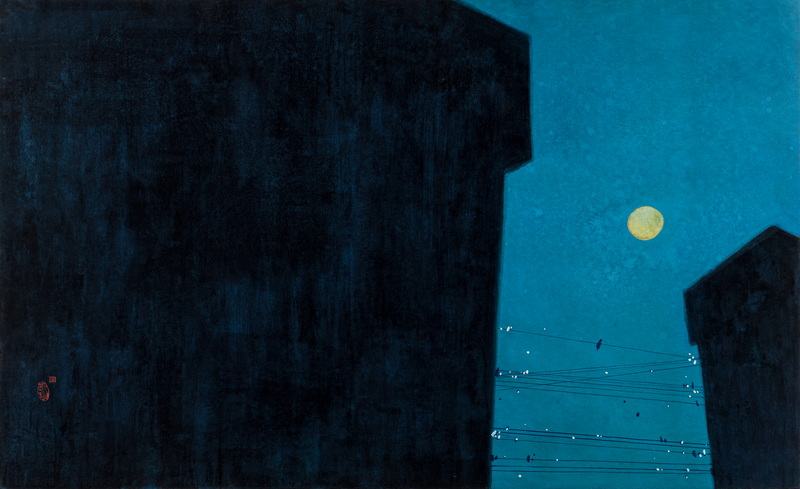
Jennis: Thank you for this interview. I was moved by your artworks in an exhibition a few years ago. I think your unique blue color is hard to express with oil paints. Did you major in Oriental painting?
Lim Nam-jin: No. I majored in Western painting in the College of Fine Arts at Chosun University. But now I am using Oriental painting colors.
Jennis: What prompted you to make such a change in your painting materials?
Lim Nam-jin: One of my seniors received an order from a temple to paint tanghwa (Buddhist temple-style painting), and he asked me to help him complete the painting before the approaching ceremonial date. After the project was finished, my senior gave me the remaining Oriental painting materials, saying that I was good at tanghwa painting. I became fascinated with the tanghwa of the Goryeo Dynasty and became familiar with the gamro tanghwa style.
Jennis: What exactly is gamro tanghwa style?
Lim Nam-jin: Gamro tanghwa is the style of Buddhist paintings that especially deals with the souls of the dead. It expresses what people go through after death according to karma. I thought it would take me at least ten years to completely understand the essence of gamro tanghwa, so I immersed myself into gamro tanghwa painting for a decade.
Jennis: In your painting Yeongheung Restaurant (영흥식당), there are many people intermingled with a lotus pond. What are you expressing in this painting?
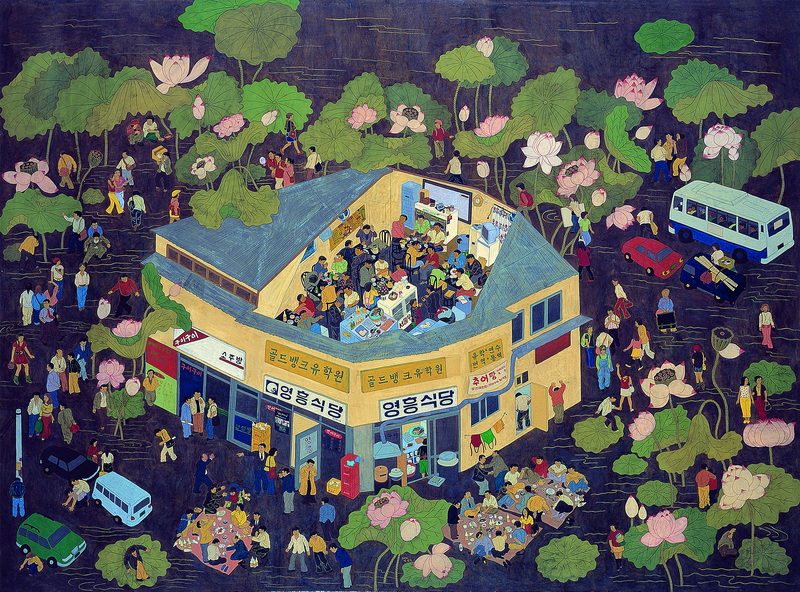
Lim Nam-jin: Yeongheung Restaurant was located on Gwangju’s Art Street and was a meeting place for artists and makgeolli lovers. When the restaurant closed for good, I painted it while reminiscing on all those old memories, forgotten people, and my fading dreams. Beautiful lotus flowers grow in muddy, not in clear, water. It was a bar where you could see people without masks. By painting human figures living in the mud, I expressed my wish for a world of blooming lotus flowers.
Jennis: You painted many people in great detail in Yeongheung Restaurant. I would guess that it took quite a lot of time to complete it. How long did it take?
Lim Nam-jin: For a big piece of work such as this was, it takes more than seven months. And for two-thirds of that time, I draw the details of the draft. So, I do basic work for months before putting on any colors.
Jennis: What kind of paints do you usually use?
Lim Nam-jin: There is a special paint used for tanghwa, but I wanted to keep a distance from the feeling of traditional tanghwa, so I use bunchae, a kind of Oriental pastel colors. I majored in Western painting in college, but I liked the subtle colors of Korean painting. As I put the colors on the paper, the power of the combination of color, agyo-pul [a natural ingredients glue], and water, made accidental colors by themselves. I think this is the magnetism of Korean painting.
Jennis: After the ten-year journey into tanghwa, you had your first solo exhibition. How did that go?
Lim Nam-jin: I received a lot of praise from the people who came, but after the exhibition, I started to be somewhat concerned about my painting style. For a while, I could not do individual exhibitions and only did group exhibitions.
Jennis: What caused you to lose confidence in your much-acclaimed gamro tanghwa?
Lim Nam-jin: In Western or Oriental painting, many artists learn these styles from replicating classical artworks as a process of study. But I did not consider that tanghwa was not my own, so I painted with all my might. Then, all of a sudden, I thought what would be my own painting without the form of tanghwa, which anyone can paint. So, I lost direction for quite a while.
Jennis: I have so many questions; I hope you do not mind. In one of your artworks, Liquid Lunch on a Day of Contemplation, there is a woman looking at an empty bottle in a paper boat enjoying the waves on a rough sea. And in another painting, The Island on a Day of Contemplation, the woman arrived on the cushion-island safely from a long journey. I feel that your Day of Contemplation series is like a set of self-portraits on the journey to finding your true self.

Lim Nam-jin: You might look at it that way. If tanghwa was a projection of life in this world, then I think the Day of Contemplation series represented myself.
Jennis: In the work A Happy Day, there are three shadow-like characters serving a beautiful woman. What does this painting represent?
Lim Nam-jin: That is Agui (아귀), a kind of spirit from gamro tanghwa painting. Because of its greed in a former life, the spirit of Agui always suffers from hunger. It is a creature with a big stomach but which cannot eat properly because of its narrow throat. It is said that Agui has a human-like soul, so I drew Agui with a human appearance, as humans have a desire for material things.
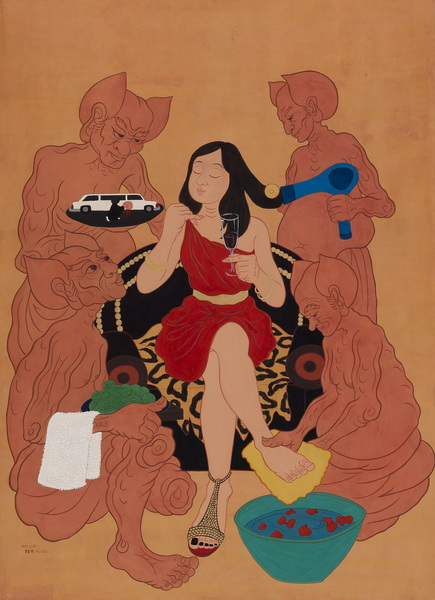
Jennis: Your work continues to change. When did your Still Life series start?
Lim Nam-jin: I had a lot of fun when I was working with tanghwa, but in the process of finding my own world of work, I got sick. I had a hard time physically and emotionally. At that time, I began to recognize the things around me that I never really realized before. For example, the sky came into my eyes. I could also see the faint daytime moon floating in the blue sky. They were just scenes that I had seen countless times in my life but never really took note of. So, I decided to depict them.
Jennis: The painting of two dark blue buildings that I saw in that gallery many years ago was titled Still Life. I thought the painting and the title were a great match. It reminded me of a movie also named Still Life that was quite moving.
Lim Nam-jin: Right, I saw that movie six times. When I was thinking about the direction of my painting, that movie inspired me. I wanted to express my insight into life. So, I named my work Still Life. “Still life” has a double meaning: One is of making still-life paintings, the other one is for living life calmly.
Jennis: Your artworks are gradually transforming into simpler paintings. Last year, when I went to Art Week Damyang, I saw your work titled A Letter from a Certain Memory. I wonder how you came up with the idea of drawing folded paper letters.
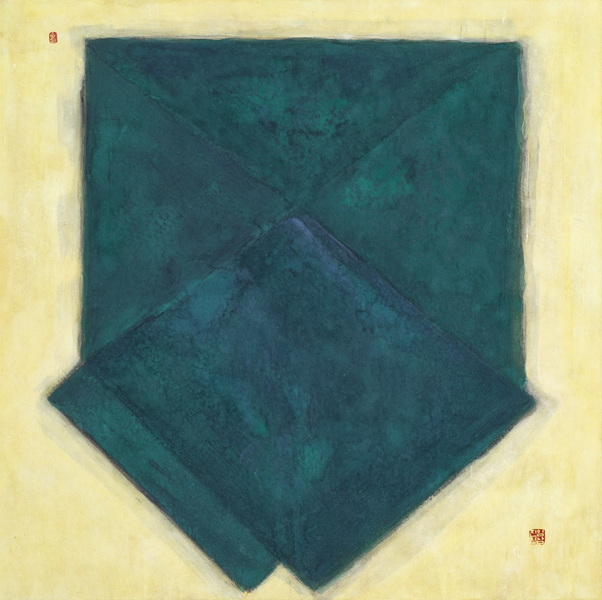
Lim Nam-jin: I wanted to put people’s hearts into something in my paintings. So, I expressed the feelings that we had when we were young. I painted the memory of each person in a different color.
Jennis: Your painting A Letter from a Certain Memory draws the viewer into it. Standing in front of the painting, the content of the letter could change with the person’s various memories, and from person to person. Only those with imagination can see what is inside. Very interesting! I want to ask, what might your future works be?
Lim Nam-jin: People say that the colors of my paintings are getting brighter these days. I will continue steadily the work I am doing now. And I am planning a series named Deun jari, nan jari (든 자리, 난 자리), somewhat similar in meaning to “Absence makes the heart grow fonder.”
The Korean proverb Deun jari mollado nan jari anda (든 자리는 몰라도 난 자리는 안다) means that we do not take particular notice of a person when then are with us, but their absence is strongly felt. We usually do not recognize how precious it is for someone to be by us. I also felt a lot of emptiness after my mother’s passing. Someday, I plan to release the series Deun jari, nan jari expressing “Absence makes the heart grow fonder.”
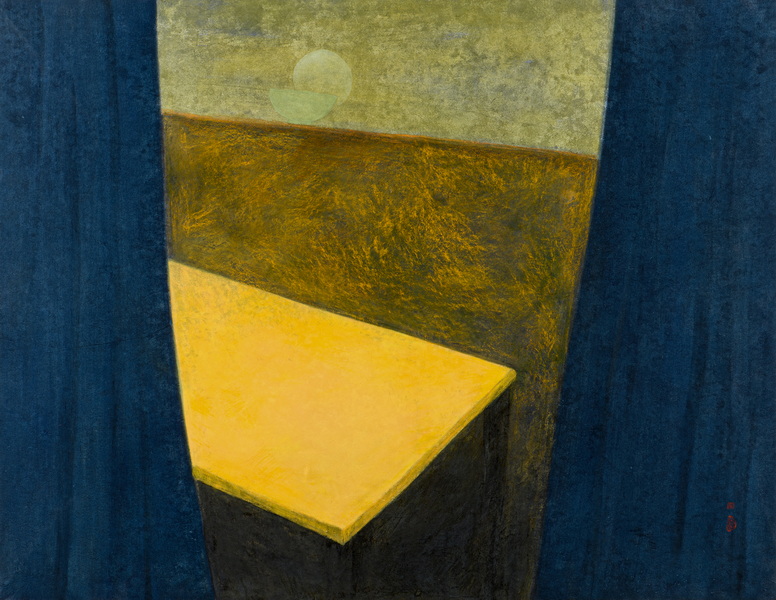
Jennis: Great! I will continue to view your works at your exhibitions in the months and years ahead – including Deun jari, nan jari. Thank you for your time for this interview.
After the Interview…
Lim Nam-jin is a painter who gives us subject matter to ponder, and her paintings give us a space to step into. I am curious as to what kind of memories you might recall when you look at her painting Letter from a Certain Memory.
Lim Nam-jin’s Solo Exhibitions
- 2023 Attention, Please! (Group of Four, Art Center KUH, Daejeon)
- 2022 Still Life, Invitational Individual Exhibition (Shinsegae Gallery, Gwangju)
- 2021 Still Life, Herald Art Day Invitational Exhibition (Gwanggyo, Suwon)
- 2021 Still Life Blue, Invitational Exhibition (Starlight Museum, Sochon Art Factory)
- 2019 That Love – Feelings of Clouds & Rain (Art Space House, Gwangju)
- 2018 Still Life Blue (Yangnim Art Museum, Gwangju)
- 2018 Still Life Exhibition (G&J Gwangju-Jeonnam Gallery, Seoul)
- 2012 Flowers Bloom, Flowers Fade; Invitational Exhibition (Gwangju Shinsegae Gallery, Gwangju)
- 2010 A Boring Day, Invitational Exhibition (G.M.A. Geumnam-ro Branch, Gwangju)
- 2009 Island, G.M.A. Young Artist Invitational Exhibition (Light Gallery, Seoul)
- 2007 The Journey of the Soul (Gwangju Lotte Gallery, Gwangju)
Main Collections
- Gwangju Museum of Art
- Jeonnam Museum of Art
- May 18 Democratization Movement Archives
- Sungbo Museum (Jikji Temple)
- Jungheung Construction Co., Ltd.
- Golf Zone Co., Ltd.
The Interviewer
Jennis Kang is a life-long resident of Gwangju. She has been doing oil painting for almost a decade, and she has learned that there are a lot of fabulous artists in this City of Art. As a freelance interpreter, her desire is to introduce these wonderful artists to the world. Email: speer@naver.com




